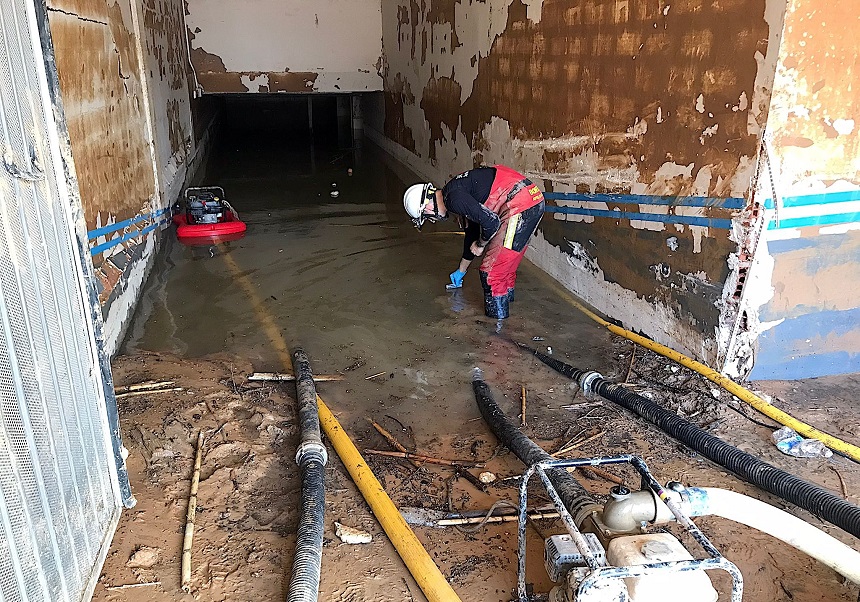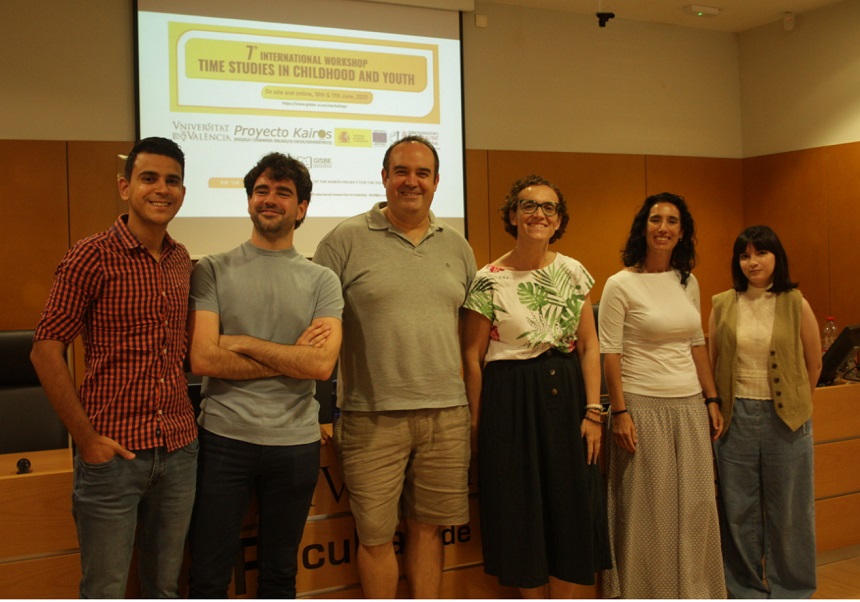The University of Valencia analyses mud and water in the area affected by the DANA to detect potential infectious diseases and prevent epidemics
- Scientific Culture and Innovation Unit
- November 20th, 2024

The Health Parasitology Unit of the University of Valencia, an official collaborating centre of the World Health Organization (WHO) and a reference centre for the FAO/United Nations, is analysing both urban and rural waters in the area impacted by the weather phenomenon known as the DANA. This initiative, supported by the University Institute of Tropical Diseases and Public Health of the Canary Islands and the Carlos III Health Institute in Madrid, aims to prevent potential epidemicsin the region caused by infectious diseases.
Sample collection is underway in the affected areas, with analyses focusing on the detection of bacteria, viruses, rickettsiae, protozoa, helminths and vectors, primarily mosquitoes and molluscs, which are significant carriers of disease. The dragging of an enormous amount of mud, plant debris, faecal matter and decomposing animal remains could create a heightened risk of infectious diseases as a result of the collapse of the hygienic-sanitary infrastructure, explains Santiago Mas-Coma, emeritus professor of Parasitology at the University of Valencia and coordinator of the two United Nations centres within the Health Parasitology Unit.
“Initial studies are being directed towards the detection of highly infectious and easily transmissible pathogens, particularly those of direct infection or of zoonotic origin, and involve comparative studies between flooded and unaffected neighbouring areas. Several infectious agents have already been identified in the flooded zone”,explains Mas-Coma.
As soon as definitive results and their distribution in specific urban and rural areasare available, detailed information will be shared with healthcare and assistance centres to aid in the diagnosis, treatment and prevention of infections among residents and volunteer helpers. Additional sampling is planned in the medium and long term to identify slow-emerging or indirectly transmitted infectious agents.
Currently, blocked sewer systems, overwhelmed wastewater facilities, contaminated drinking water pipes, direct contact with mud, inhalation of moist air in fully flooded spaces such as garages and insufficient cleaning and disinfection supplies could lead to outbreaks. Monitoring these risks through infection analysis is essential.
“The University of Valencia is actively involved in analysing and preventing potential epidemics of infectious diseasesin the area affected by the DANA of 29 October. After the initial chaotic situation, the university launched an immediate initiative the very first week after the catastrophe, on 4 November, to assess the risks of epidemics and individual infections caused by all types of infectious agents”,Santiago Mas-Coma explains.
The devastating floods, which affected 75 municipalities in L’Horta Sud, La Ribera Alta, La Hoya de Buñol-Chiva and La Plana de Utiel-Requena, as well as southern Valencia, included water from dams into the rivers through ravines, interconnected by artificial channels in the extensive local hydrographic network. The proximity of large human and domestic animal populations, as well as peridomestic rodents, is a key factor in these analyses, adds Mas-Coma.
Categories: Recerca, innovació i transferència , Grups de recerca , Facultat de Farmàcia , Farmàcia i Tecnologia Farmacèutica i Parasitologia , Difusió i comunicació científica , Internacionalització recerca , Investigació a la UV
















